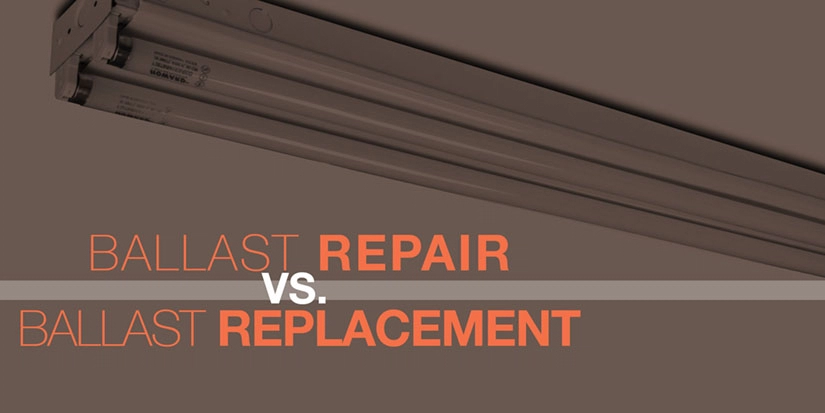
While simply swapping burned out bulbs in an existing ballast is deemed “ballast repair” by many – and can offer advantages in longevity and energy savings – sometimes this simple “fix” is not enough. To achieve significant performance and energy savings, you need the technology and design enhancements ballast replacement can bring.
For energy savings, reliability, and longevity – replace ballasts – not bulbs
In addition to energy efficiency issues, older ballasts simply do not offer the reflection geometry newer options do. This can equate to both light that is not maximized to its fullest potential (lost light), and light pollution (light/shadows where they’re not wanted). Additionally, though a quick bulb swap may seem easier at first glance, matching replacement bulbs to archaic ballasts can be tricky – and dangerous.
Getting the most bang for your lighting buck with ballast replacement
To ensure a lasting choice that’s certain to meet the needs of your home or business for the foreseeable future, understanding ballast replacement logistics are essential.
1. Choose the right fixture.
- Look for the most efficient ballast technology to meet your application needs or style, such as ballasts compatible with...
- Fluorescent lights - Most commonly used in commercial applications.
- Halogen lights – Outdoor applications, such as security and stadium lighting.
- HID/Metal Halide lights – Produce large quantities of very bright light for industrial/warehouse applications.
- LED lights – A multi-functional energy-miser.
2. Ensure temperature compatibility.
Each bulb-type has many sub-types with benefits and limitations, including those that won’t work in freezing (fluorescents), hot (LEDs), or wet conditions (check for outdoor use). Be certain to thoroughly research your choice before deciding on and investing in a given ballast/bulb combination.
3. Place it right.
Taking into consideration ceiling height, spacing, glare, light distribution, and task plane height. Remember these key points:
- Lighting behind a person can cause shadows.
- Lighting in front of a person can cause glare and eye strain.
- Lighting from both sides reduces glare.
- Multiple fixtures offer more even lighting and reduced shadows and glare in larger spaces.
- Very bright overhead lighting can create screen reflection and glare.
4. Go the distance.
Doubling the distance to your fixture can reduce lighting levels by a factor of 4; bringing lighting closer to its intended target area likewise increases lighting levels.
5. Consider the setting and appearance.
Ceiling height, wall and furnishing colors, and more affect lighting levels. For rooms with dark surfaces or cathedral ceilings, minimal lighting levels could require increases of 50-100 percent; vice versa for bright, squat interiors.
6. Don’t overlook safety.
When installing ballast, ensure proper mounting hardware for a strong fit. If you’re not sure on wiring in any regard, get help. Replace bulbs when they burn out, being certain to match each to ballast specifications (ie: not using a 60 watt bulb in a 40 watt fixture) to prevent fire. Aluminum or other ancient wiring modality revealed when swapping ballasts? Call in a pro.
7. Integrate.
Integrating new ballasts with existing technology, such as emergency/backup power sources, as well as other added technology including dimmers, occupancy/vacancy sensors, daylight sensors, and the latest intelligent lighting control or automation systems offers additional flexibility, ease-of-use, safety, and savings.
Want to change the way things are hanging in your home or business? We can help. Contact Mr. Electric today.

